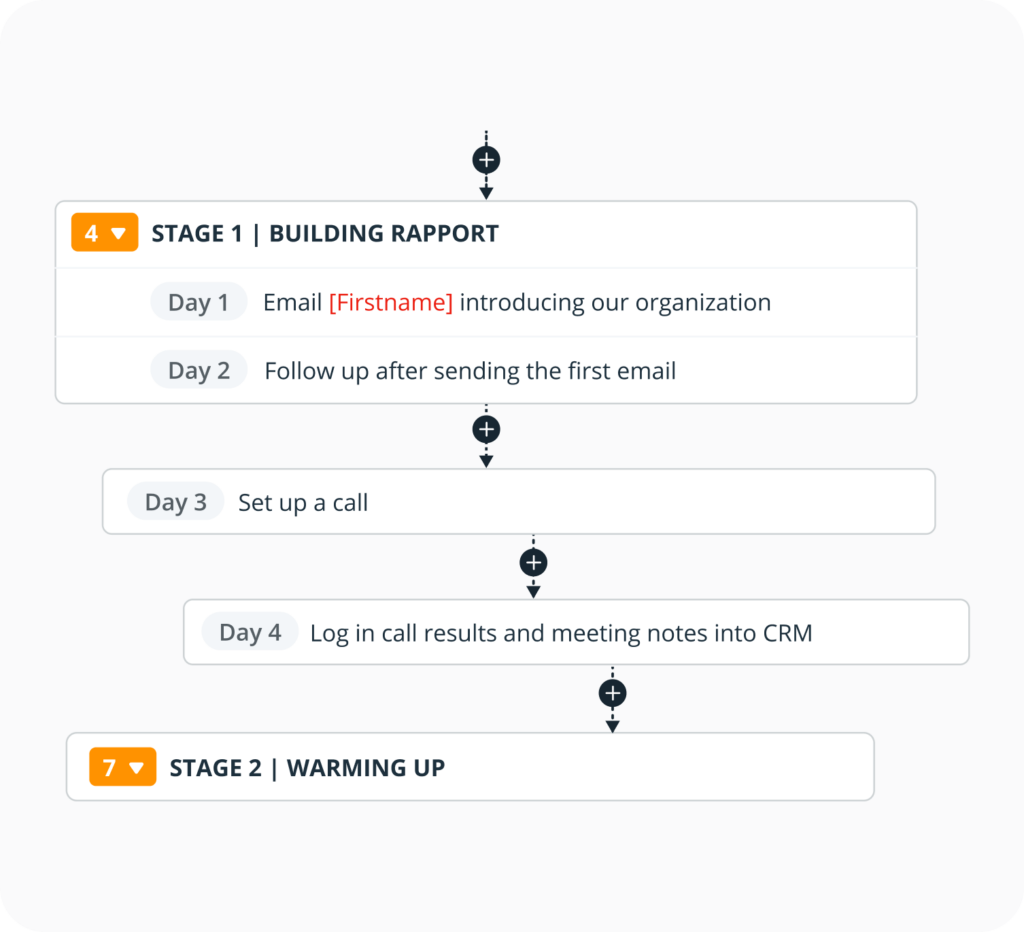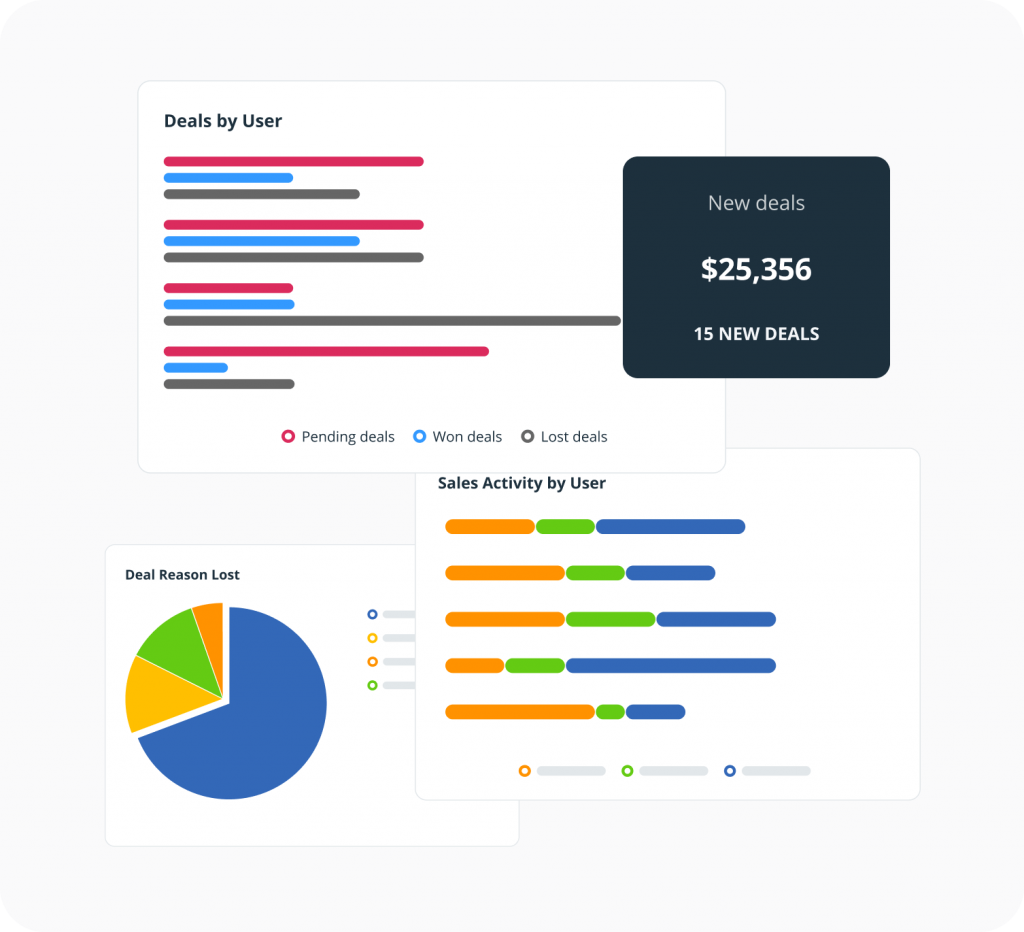

Team selling: How sales collaboration wins more deals

If you’ve been in business for a while, you probably noticed that collaboration is one of the things that leads to more profits.
That’s why more and more businesses have started to recognize the power of team selling.
When everyone on your team works together and coordinates their efforts, selling is no longer a siloed function but a company-wide mindset.
However, team selling is still quite a new approach, and while many businesses understand its importance, they don’t always know where to begin.
In this post, we’ll explore everything about team selling and share a few practical tips on fostering a collaborative sales culture in your company.
What is team selling?
Instead of relying on a single salesperson, a team selling strategy leverages the skills of your entire organization.
It helps instill a deeper sense of accountability across your company and make sure that everyone feels like they are contributing to the bottom line.
Key components of an effective team selling approach include:
- Defined roles (clearly outlined responsibilities of each team member).
- Coordinated efforts (different people are responsible for different tasks/stages across your sales pipeline).
- Open communication (you have regular team meetings and pay attention to maintaining alignment).
- Focus on relationships (both internal and external—team selling goes hand in hand with relationship selling).
Team selling vs. collaborative sales
Sales can be a bit confusing because it’s easy to get lost in all the terms, methods, abbreviations, and slang.
Team selling is no exception, unfortunately.
For example, you may have heard the terms team selling and collaborative sales used often in the same context.
This is understandable: They both talk about the same ideas—sales are a team sport and collaboration is vital for your success.
However, depending on the context, both concepts can have a few subtle differences.
While team selling is a formal approach with specific sales roles defined for each team member, collaborative sales has a slightly looser connotation. It is about the company’s overall culture.
In other words, if team selling is a sales approach, collaborative sales is more of a mindset that promotes cooperation and support, without necessarily imposing any specific frameworks.
For small businesses, nuances in the two definitions are negligible. Your intentions are more important than strictly following the definitions.
If you want to scale your business or grow sales, you need to embrace collaboration, open communication, and collective ownership.
This is essentially what team selling is about… or collaborative sales, if you prefer this term.
Why is team selling important?
Team selling can be a competitive advantage.
It allows you to punch above your weight and overcome resource limitations.
Here are some key reasons why team selling can be a game-changer for your business:
Stronger business relationships
With team selling, you can build stronger relationships with your clients and prospects.
When your clients have several people interested in their success, they feel understood, important, and confident about your business.
In this case, relationship equity gets distributed across multiple team members rather than concentrating in the hands of a single sales rep.
Besides, you can have team members interacting with different people in your client’s business. For example, technical experts make a strong impression on engineers by diving deep into technical details.
Multiple touchpoints allow you to create a broader web of relationships.
Shared accountability
In team selling, everyone on the team shares the responsibility for success or failure. Selling is no longer a one-person show, but a collective effort.
This shared accountability fosters a supportive environment.
For example, if a team member struggles to meet their targets, others can step in to share their techniques, or even take over some tasks.
One of the side effects of team selling is a collaborative sales culture where everyone feels invested in the outcome.

Flexibility
One of the biggest challenges small businesses face is having limited resources.
Team selling helps alleviate this issue by channeling cross-functional expertise into your sales pipeline.
Workloads can be better distributed across the team, preventing bottlenecks.
Additional resources can be called in for complex deals.
Three main challenges with team selling
While team selling has many benefits, implementing this collaborative approach is not without its challenges.
Unaddressed, they can lead to miscommunication and inefficiencies that undermine the very concept of team selling.
Here are some of the main challenges you may face when implementing a team selling approach (and practical ways to overcome them).
Communication
When multiple people work on sales opportunities, there’s a risk of creating information silos.
Having information locked up in personal inboxes or across different apps creates room for communication breakdowns and inaccurate data.
Responsibilities
Without clearly defined roles, responsibilities can become muddled.
This will lead to duplicated efforts, mixed messaging to clients, or work overload.
One of the biggest mistakes companies make is to assume that team selling means no clear responsibilities.
Operations
When you have several people working on selling, there’s a risk of scheduling too many internal meetings or sending too many emails in an attempt to make sure that everyone is on the same page.
Too much coordination can reduce efficiency.
5 team selling best practices
Sales collaboration is powerful because it helps you combine the unique strengths and expertise of each team member.
Below are some best practices for your team selling strategy.
1. Leverage a CRM system
Aligning the team through email and shared drives can quickly become unscalable.
That’s why you need a CRM system for team selling. All client details, sales deals, internal notes, next steps, and emails are stored in one place, accessible to the entire team.
A properly implemented and maintained CRM system prevents miscommunication, scattered information silos, and duplicated efforts.
2. Focus on qualification
Being too focused on customer acquisition is not always good. In this case, you might suffer from tunnel vision and take on any opportunity that comes your way, regardless of how close they are to your Ideal Customer Profile (ICP).
Team selling can help you implement a more rigorous approach to lead qualification and discovery.
Throughout your sales process, different team members will dig into various qualification criteria—whether it’s assessing technical fit, budget constraints, or authority.
This leads to more comprehensive diligence rather than making costly assumptions.
3. Capitalize on existing relationships
Small businesses often forget about one of their most valuable assets—the existing customers.
To make sure your team selling efforts yield good results, map and leverage your warm relationships. They could open doors to more opportunities.
Different people on your team may have former colleagues, alumni connections, or social ties who might be interested in learning about your product or services.
In team selling, everyone is a seller to some extent.
4. Implement bite-sized sales training
If you go down the team selling route, there’s a chance that not everyone will have equally good sales skills.
Some team members might need more time to catch up on negotiations or some other aspects of the sales process.
In team selling, traditional hour-long training sessions are impractical. Instead, embrace bite-sized training.
Some examples include:
- 2-minute video lessons before key sales meetings,
- interactive role-play scenarios before discovery calls,
- or quick newsletter digest summaries after major product updates.
5. Build a collaborative sales culture
A cooperative culture is the foundation for successful team selling.
Celebrate and recognize team wins collectively rather than just individual top performers. Publicly appreciate and call out teamwork, knowledge sharing, or peers going above and beyond to support each other.
Foster an environment of psychological safety where people feel empowered to voice opinions without fear of judgment.
You can also use coaching, mentoring, and cross-training by, for example, having junior reps shadow senior colleagues on sales calls.
How to implement team selling with a CRM
Implementing team selling with a CRM can help you streamline processes and boost efficiency.
It’s not just about centralizing information but also facilitating better communication. A CRM ensures everyone is moving in the same direction.
Here’s how to make the most of your CRM for team selling.
Assign contacts to team members
Team selling can involve both—internal and external collaborators.
For example, if your company has a few contractors or freelancers, they are external collaborators and you might not want to give them access to all of your business data.
Rather than working in silos, you can decide which type of data you want to share with them.
In your CRM, everything should revolve around contacts (not deals or projects) because at the end of the day, even if you’re in B2B sales, you do business with people.
For example, in OnePageCRM, you can assign contacts to different team members. This helps you make sure that no contact slips under the radar.
Besides, if you don’t want to share all of your contacts, you can create Focused Users for external contractors and share only specific data with them.

Use Shared Inbox for better communication
You can enable email sync between your Gmail/Outlook account and OnePageCRM.
In this case, all client-related emails will automatically sync to the Shared Inbox inside your CRM.
Besides, you can work together on email drafts and templates before sending any communication to your clients and prospects.
This prevents situations where different reps share conflicting info or duplicate previous responses.

Share notes and files with your team
Beyond emails, you’d want your team to keep notes of client meetings and next steps for each sales opportunity.
Having these notes all over different apps and persona accounts will not help with your team selling strategy.
That’s where a CRM system comes in especially handy.
For example, in OnePageCRM, you can not only add notes or sync your CRM with Evernote but also attach relevant files like proposals, contracts, and more to your notes.
Ideally, your CRM system should have an online document repository.

Add templates for consistency
In team selling, it’s important to keep everyone on the same page.
To do this, you can introduce a standardized sales process.
It makes it easier for your team to know what to expect and follow. A standardized sales process has a series of defined steps that serve as a guide for each sales opportunity.
These sales activities can be anything from “Send an introductory email” or “Follow up after the first call”.
In OnePageCRM, you can also create email templates for different stages of your sales process.
This ensures consistency in messaging and reduces the time spent on writing emails from scratch.

Report on team selling efforts
A CRM system allows you to generate reports that give you insights into your sales process.
With an interactive dashboard, you can get a quick overview of your sales efforts. Besides, you can also use a built-in forecasting tool.
For example, OnePageCRM is good at helping you discover patterns across your entire sales cycle and identify some bottlenecks.

Team selling in a small company
Team selling sounds like a great strategy… but what if you’re the only salesperson in your company?
Then you collaborate not with other salespeople but with other functions and departments within your business, such as Customer Support or Marketing.
Whether you’re part of a large sales team or a one-person show, team selling can have a positive impact on your bottom line and lay a strong foundation for collaborative culture in your company.










